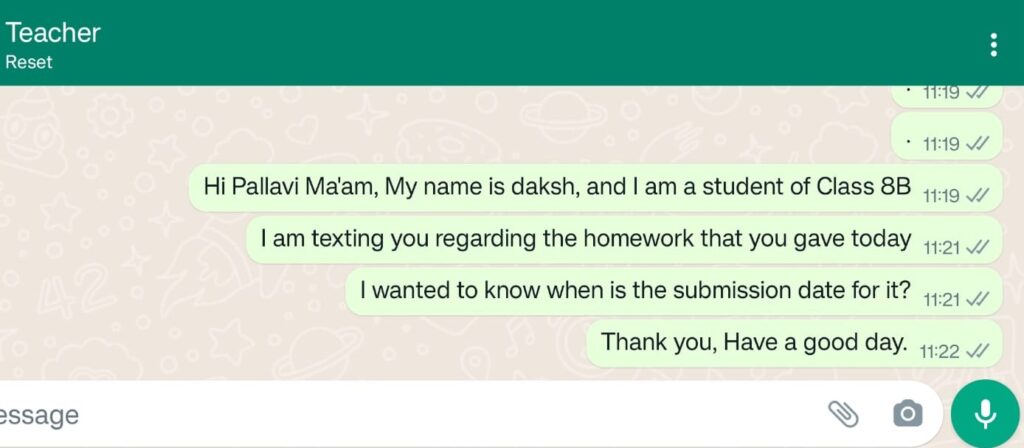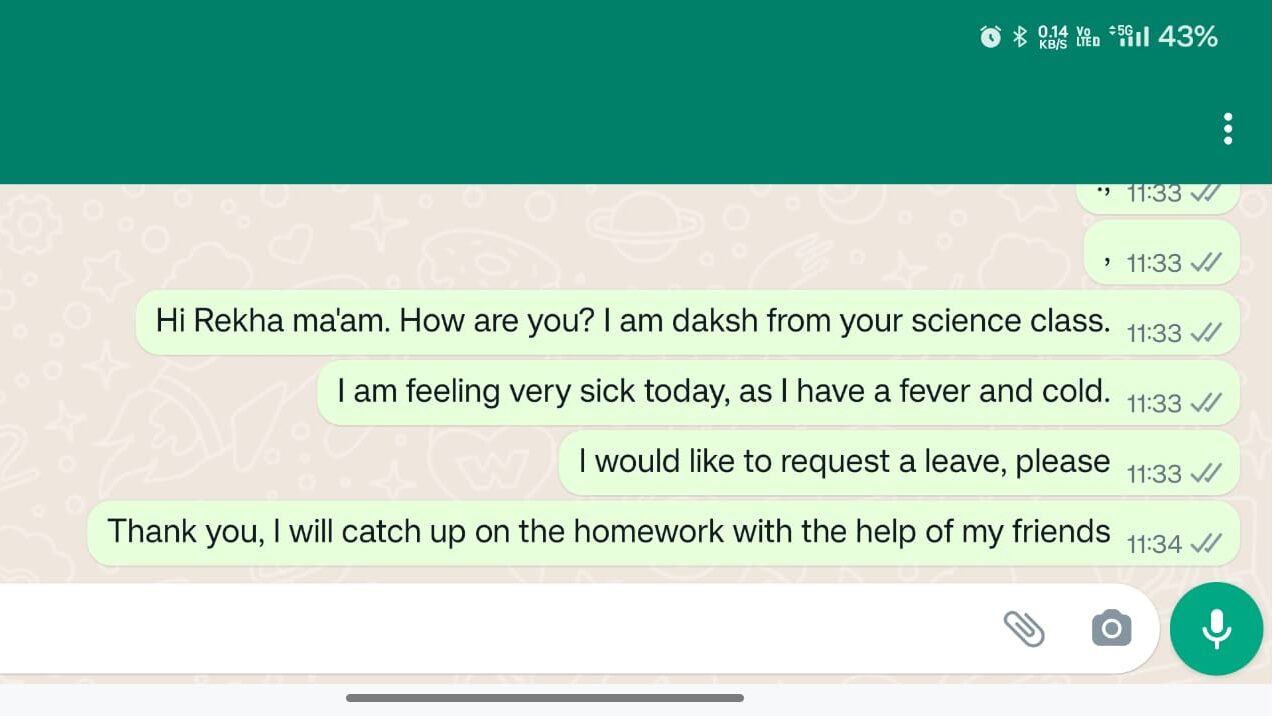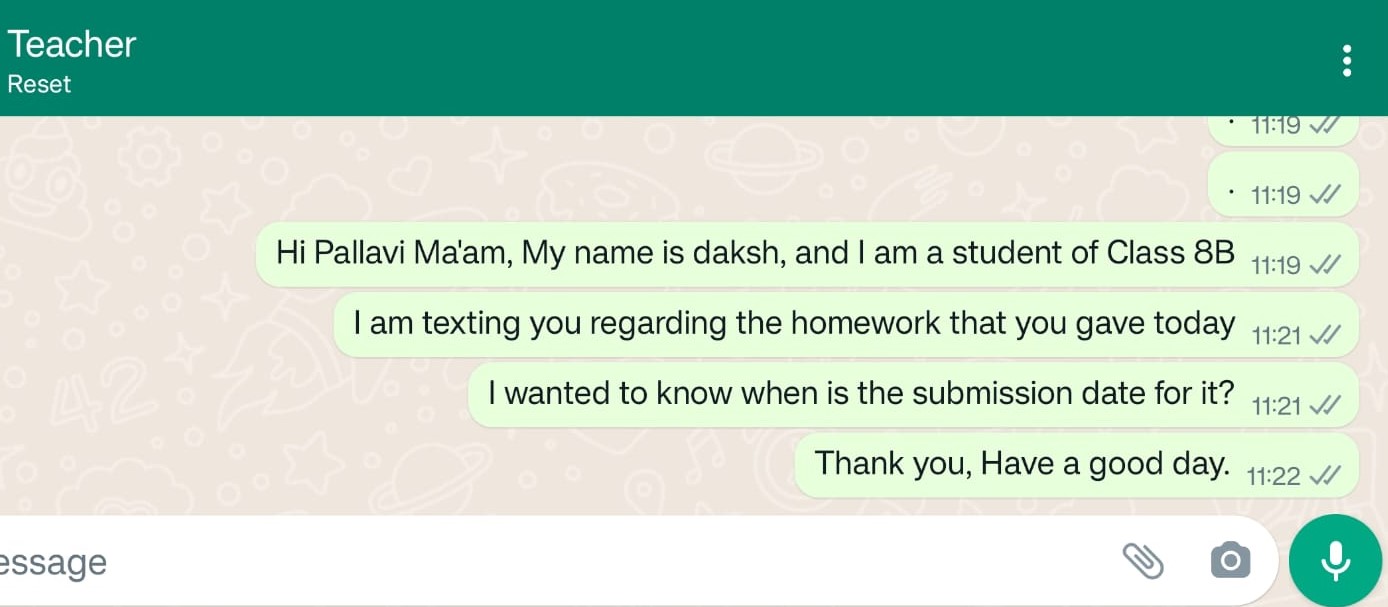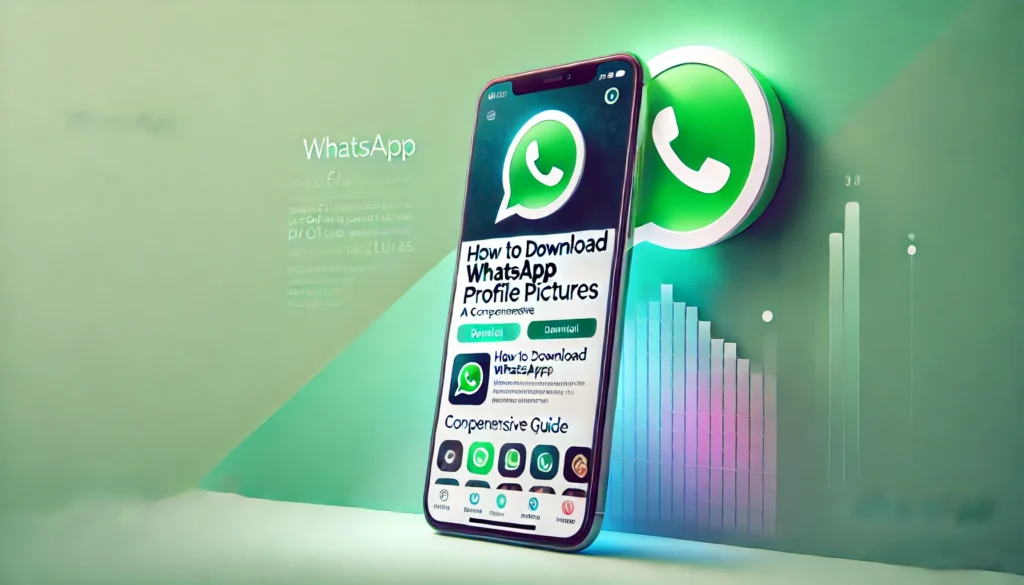In today’s fast-paced digital world, WhatsApp has become a convenient way to communicate with teachers. Whether you need to ask a doubt, request leave, or start a professional conversation, it’s essential to approach messaging with proper etiquette. This blog will guide you on how to message a teacher on WhatsApp effectively, ensuring clarity, respect, and professionalism. From crafting the perfect opening line to providing examples of common messages, we’ll cover all you need to know to communicate confidently with your teacher.
How To Message a Teacher On WhatsApp:

Introduce yourself:
Begin by clearly stating your name and class/grade. This ensures your teacher identifies you quickly.
Example: “Hi Pallavi Ma’am, My name is Daksh, and I am a student of Class 8B.”
State the purpose of messaging:
Explain the reason for contacting them concisely. Is it to clarify a concept, ask about homework, or request leave?
Example: I am texting you regarding the homework that you gave today.
Ask your question clearly and politely:
Frame your question in a respectful and straightforward manner. Avoid slang or informal language.
Example: I wanted to know when is the submission date for it?
Reply and end chat politely:
Thank your teacher for their time and response. If further clarification is needed, phrase it politely. Conclude with a courteous closing like “Thank you,” “Best regards,” or “Have a good day.”
Example: Thank you, ma’am, Have a good day.
Also Read: How to Make a WhatsApp Group Fun
How to write leave message to teacher on whatsapp:

Start with a respectful greeting:
Address your teacher appropriately, using “Dear Mr./Ms./Dr.” followed by their last name.
Or you can also write like this
- Hi Rekha ma’am. How are you? I am daksh from your science class.
State the issue you are facing:
Briefly explain the reason for your absence, being honest and truthful.
- I am feeling very sick today, as I have a fever and cold.
Ask for leave:
Clearly state the specific dates or duration of your leave you are requesting.
- “I would like to request a leave, please.”
Ending chat with gratitude:
Thank your teacher for their understanding and consideration. Offer to catch up on any missed work upon your return.
- Thank you, I will catch up on the homework with the help of my friends.
Also Read : How to Paint a T-Shirt
Tips to Text a Teacher on WhatsApp:
- Proofread your message before sending: Ensure proper grammar and spelling to convey professionalism.
- Be concise and to the point: Avoid lengthy messages that waste your teacher’s time.
- Use proper capitalization and punctuation: Maintain clarity and professionalism.
- Choose the right time: Avoid messaging late at night or on weekends unless urgent.
- Respect response time: Understand teachers may be busy and might not reply immediately.
Also Read : How to Remove Sticker from Car Glass
Things To Keep In Mind While Messaging Your Teacher:
- Maintain a formal tone: Unless your teacher explicitly encourages informality, use respectful language.
- Avoid sensitive topics: Discuss personal matters through appropriate channels, not WhatsApp.
- Mind your emojis: Use them sparingly and only if appropriate for the context.
- Respect boundaries: Don’t expect immediate replies or engage in casual conversations beyond academic matters.
Mistakes To Avoid When Messaging Teachers
Messaging teachers, whether it’s through email, messaging apps, or other communication platforms, requires a certain level of professionalism and respect. Here are some common mistakes to avoid when messaging teachers:
- Ignoring formalities: Always address the teacher with appropriate titles such as “Mr.,” “Ms.,” or “Dr.,” unless they have specifically instructed you to use their first name.
- Poor grammar and spelling: Take the time to proofread your message for grammar and spelling errors. Sloppy communication can reflect negatively on your professionalism and may indicate a lack of effort.
- Rambling or unclear messages: Be concise and to the point in your communication. Teachers often have busy schedules, so it’s important to respect their time by keeping your messages focused and easy to understand.
- Demanding rather than requesting: When asking for assistance or information, frame your requests politely as respectful inquiries rather than demands.
- Inappropriate content: Avoid discussing inappropriate topics or using offensive language in your messages. Keep all communication professional and respectful.
- Ignoring communication guidelines: If the teacher has provided specific instructions for communication (such as preferred contact hours or a particular format for emails), make sure to adhere to these guidelines.
- Lack of context: Provide sufficient context for your message so the teacher understands the purpose of your communication. This could include referencing specific assignments, topics discussed in class, or relevant background information.
- Not checking previous communications: Before reaching out to a teacher, check if your question has already been addressed in previous communications, course materials, or class discussions. Avoid asking redundant questions.
- Expecting immediate responses: While teachers strive to be responsive, understand that they may not always be available to respond immediately. Allow a reasonable amount of time for them to reply before following up.
Conclusion:
By following these guidelines, you can effectively and respectfully message your teacher on WhatsApp. Remember, clear communication, politeness, and professionalism go a long way in building positive relationships with your educators.
FAQ’s:
-Focus on clarity, conciseness, and politeness.
-State your purpose clearly and ask your question directly.
-Proofread for grammar and spelling errors.
-Thank your teacher for their time and response.
-Briefly introduce yourself and remind them who you are.
-Mention a specific reason for reaching out, like appreciation for their teaching or seeking career advice.
-Keep the conversation professional and respectful.
-Focus on genuine appreciation for their teaching methods or specific lessons.
-Ask thoughtful questions that demonstrate your engagement in the subject.
-Be polite, respectful, and professional in your communication.
-Use appropriate salutations like “Dear Mr./Ms./Dr.” followed by their last name.
-Avoid slang, informal language, and emojis.
-Maintain a polite and respectful tone throughout the message.
-Proofread carefully before sending.



